For all people, but certainly for runners its crucial to eat healthy every day. Having a nutrition plan is equally important, as running the miles during training sessions.
Healthy Nutrition
It is the combination of Varied and Balanced Nutrition, Smart Training, and Stress Release, that will optimize athletic performance. With a healthy gut and a stress-free brain, we will have more energy per day, which enables us to have more effective, and more enjoyable training sessions. Our muscles will also recover much better, with a stronger and fitter body as a result.
 Athletic performance
Athletic performance
Runners come in a wide range of training levels. From people who run-walk-run once a week to competitive marathon runners. This makes it difficult to name just one specific definition of athletic performance. Our performance is influenced by the combination of physiological, psychological, and sociocultural factors, and it will depend on what we are trying to achieve: a new personal time record, improving endurance, losing weight, maintaining overall fitness, clearing our minds, or just being outdoors more often.
Why we run, may vary from person to person. Regardless of your running goals, healthy nutrition should always be part of the plan!
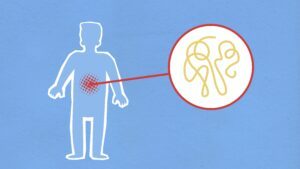 Digestive system
Digestive system
Everything we consume will be digested into smaller molecules that will be delivered to the body parts, organs, or muscles that need them. Our digestive system is constantly influenced by the hormones and the Oxygen/CO2 levels in our body. Without noticing much of it, many biochemical reactions will take place.
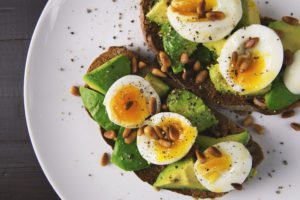 Nutrition
Nutrition
With the consumption of food and beverages, nutrition describes the intake of macronutrients (the organic substances that include carbohydrates, proteins, and fats), micronutrients (such as vitamins, minerals), and fluids.
As a general rule, a healthy well-balanced diet should be high in complex carbohydrates, moderate in lean protein, and sufficient healthy fats.
 Well-balanced runners diet
Well-balanced runners diet
When looking into a runner’s nutrition, we first need to describe the type of athlete and his/her energy needs. A competitive sprinter needs a different nutrition plan than a leisure jogger or a marathon runner, for example.
Not only should we count the needed macros, but we should also consider:
- the types of products that we consume,
- the quality of our consumptions,
- the quantities of our intakes,
- the timing of our eating moments,
- & the frequency of eating/drinking .
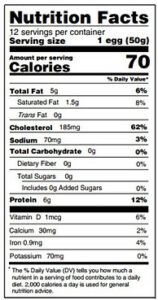 Macronutrients
Macronutrients
The main reason to eat and drink is to fuel our bodies to function, move, repair, and maintain damaged cells. All our food contains a combination of macronutrients: fats, carbohydrates, and proteins. Each macronutrient provides us with energy and plays a vital function within our bodies.
 1. Fats
1. Fats
Fats used to have a bad image because they’d been associated with lifestyle diseases, like obesity, high blood pressure, diabetes, high cholesterol, and heart disease. But not all fats are bad! In fact, our bodies need -healthy- fats, as they are indispensable as a building material for cells and organs.
 Key functions of fat
Key functions of fat
Fat is an essential part of our diet. It provides energy, absorbs certain nutrients, and maintains our core body temperature. Daily consumption of fat every day will support these functions.
Types of fats
There are several different types of fat. Which ones are healthy fats and which ones aren’t?
 Healthy fats
Healthy fats
Healthy fats come from unprocessed whole foods and can help prevent chronic disease and promote better health. Not only are healthy fats an important source of energy but they have also been shown to help improve heart health and boost brain function and our nervous system. Plus they promote satiety and enhance nutrient absorption. Products that contain healthy fats are for example olive and coconut oil, nuts & seeds, fatty fish, avocado, eggs, dark chocolate, grass-fed beef, full-fat dairy, butter, and ghee.
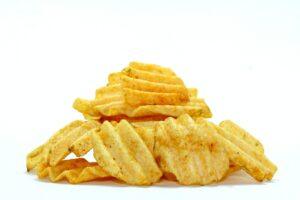 Unhealthy fats
Unhealthy fats
Unhealthy fats are mostly highly-processed fats that contain a lot of additives and other unhealthy ingredients. For example, trans fats, are industrially made by “hydrogenating” vegetable oil in a process that involves bombarding it with hydrogen gas. This transforms the liquid unsaturated fats into solid or nearly solid saturated and trans fats.
Consuming too many products that contain unhealthy fats can contribute to chronic disease and weight gain, as they are generally high in disease-causing, artery-clogging trans fats. Products such as refined oils, processed meats, and snack foods, like chips and baked goods, should be avoided at all costs.
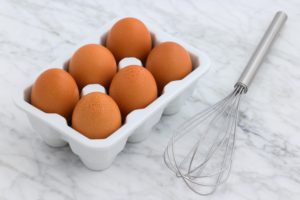 2. Proteins
2. Proteins
Proteins are large, complex molecules that play many critical roles in the body. They do most of the work in cells and are required for the structure, function, and regulation of the body’s tissues and organs. Proteins make up the building blocks of organs, muscles, skin, and hormones. Our body needs protein to maintain and repair tissue and cells. Meanwhile, children need them for growth.
Types of proteins
Proteins are made up of hundreds or thousands of smaller units called amino acids, which are attached to one another in long chains. There are 20 different types of amino acids that can be combined to build a protein.
 Key Functions of Protein
Key Functions of Protein
Antibody: these types of proteins bind specific foreign particles, such as viruses and bacteria, to help protect the body.
- Enzymes: these carry out almost all of the chemical reactions inside the cells. And they also assist with the formation of new molecules by reading genetic information.
- Messenger: the messenger proteins, such as hormones, transmit signals to coordinate biochemical processes between cells, tissues, and organs.
- Structural component: these provide structure and support to cells. On a larger scale, they allow our bodies to move.
- Transport/storage: these proteins bind and carry atoms and very tiny molecules within cells and throughout the body.
 Protein-rich foods
Protein-rich foods
Proteins can be found in almost all types of both vegetable and animal-sourced foods. Animal sources of protein are lean beef meat, fish, poultry, milk (dairy products), cheese, and eggs. Vegetable sources include bread, rice, pasta, legumes, soy, nuts, and mushrooms.
 3. Carbohydrates
3. Carbohydrates
Carbohydrates often get a bad reputation, especially when it comes to sugar causing weight gain. Reducing our sugar intake surely isn’t a bad idea, but not all carbs are sugar, and not all carbs are bad.
 Types of carbohydrates
Types of carbohydrates
Most carbohydrates occur naturally in plant-based foods, such as grains. Food manufacturers often add carbohydrates to processed foods in the form of starch or added sugar.
- Sugar: is the simplest form of carbohydrate and occurs naturally in some foods, including fruits, vegetables, milk, and dairy products. Types of sugar include fruit sugar (fructose), table sugar (sucrose), and milk sugar (lactose).
- Starch: is a complex carbohydrate, meaning it is made of many sugar units bonded together. Starch occurs naturally in vegetables, grains, and cooked dry beans and peas.
- Fiber: also is a complex carbohydrate. It occurs naturally in fruits, vegetables, whole grains, and cooked dry beans and peas.
 Key Functions of Carbs
Key Functions of Carbs
Unprocessed carbohydrates have several health benefits. They are vital to your health for a number of reasons:
- Energy: Carbohydrates provide us with a lot of energy rapidly after consumption. During digestion, sugars and starches are broken down into simple sugars. They will then get absorbed into your bloodstream as blood sugar (blood glucose). From there, glucose enters your body’s cells with the help of insulin. Glucose is used by your body for energy and fuels all of your physical activities (e.g. talking, moving, running, breathing). Unused glucose will be stored in your liver, muscles, and other cells for later use, or it is converted to body fat.
- Disease protection: whole grains and dietary fiber from whole foods help reduce risks of cardiovascular diseases. Fibers also protect against obesity and type 2 diabetes and they are essential for optimal digestive health.
- Weight control: eating plenty of fruit, vegetables, and whole grains can help you control your body weight. Their bulk and fiber content aids weight control by helping you feel full on fewer calories. Contrary to what low-carb diets claim, very few studies show that a diet rich in healthy carbohydrates leads to weight gain or obesity.
 Fast vs Slow carbs
Fast vs Slow carbs
Depending on the structure of the carbohydrate molecules, the process of digestion can take place rapidly or slowly. Fast carbs tend to release energy at a higher pace and they get used quickly. The glycemic index measures how fast this digestion process occurs.
 Fast Carbs: High Glycemic Index (GI)
Fast Carbs: High Glycemic Index (GI)
The glycemic index classifies carbohydrate-containing foods according to their potential to raise your blood sugar level. Consuming food with a high GI level will raise blood sugar levels fast and high. They contain high levels of fast carbs.
Foods with a relatively high glycemic index ranking include potatoes, pasta, white bread, and snack foods or desserts that contain refined flour.
 Slow Carbs: Low Glycemic Index (GI)
Slow Carbs: Low Glycemic Index (GI)
Products that increase your blood sugar slowly and gradually, have a so-called low glycemic index. Products with a low GI are generally rich in fibers and contain healthy carbs will keep your blood sugar level (and therefore energy level) more in balance and keep you satiated sooner and for a longer period of time.
Healthier food options, such as whole grains, legumes, vegetables, fruits, and low-fat dairy products, are naturally lower on the glycemic index.
Cause of energy dips
Consuming products that are high in fast carbs (high GI), will result in a rapid spike in our blood sugar levels, which will give us an instant energy peak. But the energy level will also drop again at the same speed. These alternating highs and lows in energy will make us feel tired, exhausted, and cranky, and it will make us crave more (sweet) food. It is recommendable to keep your blood sugar levels in balance throughout the day.
 Micronutrients
Micronutrients
Micronutrients are the vitamins and minerals in our food. Unlike macronutrients, we only need little amounts of micronutrients to maintain wellness and health. They are crucial in the production of proteins, hormones, enzymes, and other essential processes performed by your body.
Fresh, wholesome food
To provide yourself with the recommended daily amount of micronutrients, simply have a healthy, well-balanced diet. Choose natural, wholesome, and fresh foods, including vegetables & fruits, lean meat, whole grains, and legumes.
 Good sources of Vitamins & Minerals
Good sources of Vitamins & Minerals
- vitamin C: orange, kiwi, strawberries, grapefruit, papaya, broccoli, cauliflower, cantaloupe, pineapple, bell pepper, guava, and kale.
- vitamin D: spending 10-15 minutes outdoors for daylight/sunshine.
- vitamin A: sweet potato, carrots, pumpkin, green leafy vegetables (kale, spinach), bell pepper, squash, eggs, beef, and peaches.
- vitamin E: almonds, olive oil, sunflower seeds, peanut butter.
- Calcium: milk, yogurt, cheese, canned salmon, beans, dark leafy greens (kale, spinach), rhubarb.
- Iron: eggs, beef, broccoli, spinach, dates, raisins, almonds, lentils, green leafy vegetables.
- Potassium: bananas, dried fruits, potatoes, cantaloupe, winter squash, milk, spinach, and pinto beans.
- Magnesium: leafy greens, pumpkin seeds, beans, almonds, Swiss chard, quinoa.
- Zinc: dark meat, poultry, whole grains, wheat germ, raw oysters, and seafood.
- Sodium: salt.
 Supplements are no substitute for healthy food!
Supplements are no substitute for healthy food!
The word supplement means “something added, especially to make up for a deficiency”. It’s important to mention that nutritional supplements are never a substitute for a healthful diet, but sometimes they can fill the gaps.
When to take nutritional Supplements?
Normally, most people should be able to get all the nutrients they need from a varied, balanced diet. However, if your diet is lacking or certain health conditions trigger a nutritional deficiency, dietary supplements can provide you with extra nutrients. Another reason why people take nutritional supplements is to support specific physiological functions.
For example, it’s useful to take Vitamin D supplements in winter, when we spend less time outdoors.
 NeoLife Nutritionals
NeoLife Nutritionals
Good News! MoreFun2Run’s owner, Angelique Pascaud, is an official distributor for NeoLife International, a global company that has been a pioneer in whole-food nutrition supplementation since 1958. NeoLife Nutritionals offer the highest quality based on whole foods, with formulas based on nature and backed by science. With over 60 years of proven solutions, you can trust in purity and safety for yourself and your family.
Check out our Neolife Page to learn more
 Food timings
Food timings
Eating well is much more than just counting macros. The timing of your food intake plays an important role too.
Depending on the type of physical activity you have planned, and at which intensity, you may want to choose your type of foods and when to have them accordingly. Professional athletes often follow a specific sports nutrition plan. But for most leisure runners, it is also good to know what to consume in which amount and when is the best timing for optimal effect.
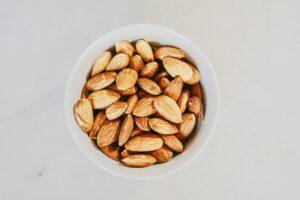 Post-workout cravings
Post-workout cravings
Our body chooses the path of least resistance and therefore prefers to burn glycogen (blood sugar). The body finds it more difficult to choose to burn fats if it always has sugars at its disposal. Various hormones make you feel and think that you really need something sweet, especially after a run, which is not necessarily true because you certainly have sufficient fats stored inside your body, that can be used as a source of energy. Even very slim people have enough fat. But if you really want to eat something after a run, better refuel with a post-workout snack that is rich in protein or healthy fats: like a bowl of Greek yogurt, eggs, or a handful of nuts.
 Running on an empty stomach
Running on an empty stomach
Whether we need to eat before or during a workout, depends on the intensity and the duration of the run. During a full marathon, for example, we may indeed need to refuel along the way. But for an easy duration run of less than an hour, we could even run on an empty stomach, as our bodies have enough fats stored that can be used. If the run isn’t too long and not too intense, we can easily run on an empty stomach, especially if we maintain our heart rate at a lower level and perform at an energy-efficient running pace. A helpful “trick” is slowing down our breathing frequency.
 Breathe slower for maximum oxygen uptake
Breathe slower for maximum oxygen uptake
Changing your breathing to a lower frequency will make your metabolism switch from using sugars to fat as your primary source of energy. A slower breath means your heart rate won’t rise too fast during your run, which will make it easier for us to not give up before we’ve finished the whole long distance.
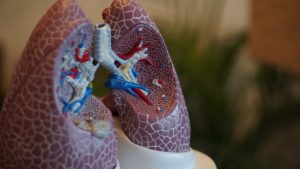 Another positive effect of a low breathing frequency is to keep CO2 a bit longer in our bodies. We might think that CO2 is just a waste product, but CO2 plays an important role in the optimization of our blood flow and the process of oxygen absorption by our muscles and organs. CO2 is key to getting more oxygen into our cells.
Another positive effect of a low breathing frequency is to keep CO2 a bit longer in our bodies. We might think that CO2 is just a waste product, but CO2 plays an important role in the optimization of our blood flow and the process of oxygen absorption by our muscles and organs. CO2 is key to getting more oxygen into our cells.
 Use your nose!
Use your nose!
Nasal breathing is very useful to lower breathing frequency. It will need some practice to get used to inhaling and exhaling through your nose only, as it will allow smaller amounts of air per breath, compared to mouth breathing. But everyone can learn it. In the beginning, nasal breathing will force you to slow down your running pace. Over time you will be able to breathe entirely through your nose, at any speed or effort. As you get this, you’ll find your perceived effort goes down, even as your running pace goes up!
 Running Power
Running Power
Slower breathe = more oxygen uptake = more energy efficient
You will be able to better manage your energy levels and run longer distances. Better breathing will lead to better athletic performance! Using carbs as a source of energy can be described as burning an old newspaper. If you’d use your fat reserves instead, it would be like burning a candle. The newspaper will rapidly give you a bigger flame but they will be fully burned pretty fast. A candle, on the other hand, will offer you a smaller flame but will last for many hours. Just remember Fat = energy efficient, longer saturation Sugar = rapid energy peak that will make you hungry again after one hour
Slower breathe = lower heart rate =more fat-burn = more energy efficient
 1. Duration run
1. Duration run
Long-distance runners may have heard about “The Man with the Hammer”. The feeling of “not having enough energy to finish the whole distance” is something we’d like to avoid. We need to use our fats as the primary source of energy and optimize oxygen uptake. Therefore we should minimize our sugar intake before the run. Instead, it’s recommendable to take a pre-workout meal that contains healthy fats and slow carbs. (like a bowl of yogurt with rolled oats, nuts, seeds, and fruits). And if we focus on slow nasal breathing during the run, it will save us a lot of energy.
 2. Easy-moderate training
2. Easy-moderate training
When planning to head out for a 10km run at an easy/moderate training level, we can also use fats as the primary source of energy. Again slow nasal breathing is recommendable. Because the run isn’t too long and not very intense we may even run without taking a pre-workout meal. Our fat reserves will provide enough energy.
 3. Tempo Run
3. Tempo Run
When the tempo goes up, so will our heart rate. This will make it harder to maintain nasal breathing, which will also require more carbs as a source of energy. Try to maintain the nasal breathing for as long as you can, but if needed switch to nose inhalation and extended mouth exhalation. This will keep your body still in the fat-burning modus. Once you have to switch to 100% mouth breathing, your body will use more blood sugar as the main source of energy. If you plan to run longer than an hour at this tempo, it is recommendable to take either have a pre-workout meal or take some snacks with you to refuel during the run.
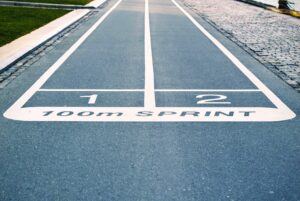 4. Sprinting, intervals, or high-impact training
4. Sprinting, intervals, or high-impact training
High-impact sprints or high-speed intervals require different nutrition than a duration run. To get a lot of energy quickly for short durations you’d better have a pre-workout snack just before the performance. Nasal breathing will be impossible and your body will mainly burn sugars.
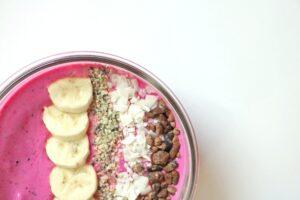 Post-workout food
Post-workout food
After intensive training (or even after a very busy day at work), your stomach might scream for food. Be careful not to grab an energy drink or muesli bar, as they are full of sugar. Heathier post-workout snack options are a banana, yogurt, a boiled egg, or just a handful of nuts. Proteins are good for muscle recovery and fats will replenish your energy.
 The impact of stress
The impact of stress
Eating, moving, running, working, being in traffic, daily worries, they are all physical and mental activities that consume energy. Eating well will keep energy replenished. But for our body and mind to function and perform at their best, we need to allow ourselves enough time to rest & recover too.
 Balance is key
Balance is key
When it comes to athletic performance, we would like to have the optimal effects of all the time and energy spent on training and healthy nutrition. Therefore it is crucial to find balance in all types of stress levels!
- Manage digestive stress: have a well-balanced healthy diet, and keep yourself hydrated.
- Manage physical stress: don’t overtrain yourself, follow a training plan (that gradually builds up) and take enough time to rest to allow your muscles to recover for the next workout.
- Take a good look at your agendas to find more balance in daily work/household duties and moments to yourself to clear your mind.
- Less (social media/TV) screen time, more time to wind off (switch off the brain).
- Prioritize more “me-time”, and find balance in must-dos and relaxation, sports/yoga/meditation, reading, music, and nature.
- Sleep: daily have 7-8 hours of good quality sleep.
 Limit digestive stress
Limit digestive stress
Eating will refuel our bodies with new energy sources. But eating is also stressing our digestive system, and the process of digestion itself costs energy too. In order to be ready to digest the next meal again, we need to allow the system some time for rest and recovery. Cells inside the stomach and intestines, for example, need to be repaired. To give our gut a bit of a recovery break during the night, it is advisable to not eat anything anymore after 8 pm. To avoid continuous stress on our digestive system, we should avoid too many eating moments (snacks) throughout the day, and limit ourselves to three main meals instead.
 Meditation and breathing exercises
Meditation and breathing exercises
Mental and physical stress may also impact our metabolism. Meditation and breathing exercises are very effective to relieve both mental and physical stress. Breathing exercises are also very helpful for better uptake of nutrients. We should always take sufficient time for our meals, and allow ourselves to eat slowly and chew well.
 Vicious circle
Vicious circle
If we eat more often, especially when we take several sugary snacks throughout the day, our digestive system will be working non-stop. Our digestive system is constantly “switched on” and uses energy to digest all we consume. Not long after the snack has been digested, we will experience another energy dip, that will make us feel hungry again. And so we’ll take another snack. To break this vicious circle, we should stimulate our bodies to use our fat storage instead: Eat smarter and stop snacking.
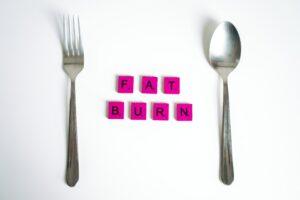 Fat burn to balance energy level
Fat burn to balance energy level
To switch our bodies from digesting the “easy-accessible sugars” to burning fats (and keep our energy more balanced throughout the day), we may need to change our eating habits:
- limit our eating moments to three main meals (breakfast/lunch/dinner).
- have healthy main meals, that are saturating and energy-efficient,
To maintain balanced energy levels throughout the day, we should include more healthy fats and minimize fast carbs or sugars in our main meals. A good main meal will keep us saturated long enough, until the next main meal. We should limit ourselves to a maximum of three eating moments per day. Also, avoid caloric fluids in between the main meals. Non-caloric drinks, such as water and unsweetened tea or coffee (without milk) can be taken throughout the day. This will help us not to take frequent snacks, not even after dinner when we are watching TV or relaxing.
 Eat slowly
Eat slowly
Nowadays our agendas are filled with things to do for our jobs, household, family, and social life. And busy traffic, phones, e-mails, social media, and daily news are triggering our brains with non-stop impulses, from the moment we wake up until the moment we get back to our beds to sleep. For optimal digestion, switch off screens, phones, and other stressors when you are eating. Take the time to eat! Breathe slowly, take smaller bites, and chew well. Having a meal when we are in the relaxed modus, will optimize the uptake of the nutrients.
 FINAL TIPS
FINAL TIPS
To stick to a healthy nutrition plan it is recommendable to:
- Invest in time-saving kitchen equipment
- Plan (and shop) your groceries ahead. If it doesn’t fit the health or fitness goal, it shouldn’t go into the kitchen. This will avoid you from grabbing a quick unhealthy snack in between meals.
- Always have “emergency food” lying around when you don’t have the time to cook: healthy snacks like raw unsalted nuts, oats, yogurt, eggs, fruit, and raw vegetable snacks.
- Prepare your ingredients in advance: create a few days’ stocks of containers with chopped-up vegetables or homemade marinates.
- Eat 3 good meals a day that fuels you with energy-efficient nutrients that are saturating, to avoid unhealthy snacking moments.
- Put a rainbow of colors of fruits and non-starchy veggies on your plates
- Reduce fast-burning carbohydrates (sugar -candy, biscuits, soft drinks, bread, pasta, rice, quinoa, etc.). Vegetables and fruits contain slow-burning carbohydrates.
- Have enough products that contain essential proteins.
- Add foods with healthy fats and Omega-3 such as salmon, avocado, and (raw, unsalted) nuts
- Drink at least 2 liters of water per day. Have your tea or coffee without sugar and milk.
- Don’t consume anything anymore, after you’ve had dinner.
- Limit the intake of alcohol to once or twice per week.
 Find your own routines
Find your own routines
I fully appreciate that each individual has their own reasons for choosing the dietary approach that they do whether it be health-related, ethical, or cultural – there is not just one right approach that works for everyone. Each of us is unique and we need to find out what works for us.

